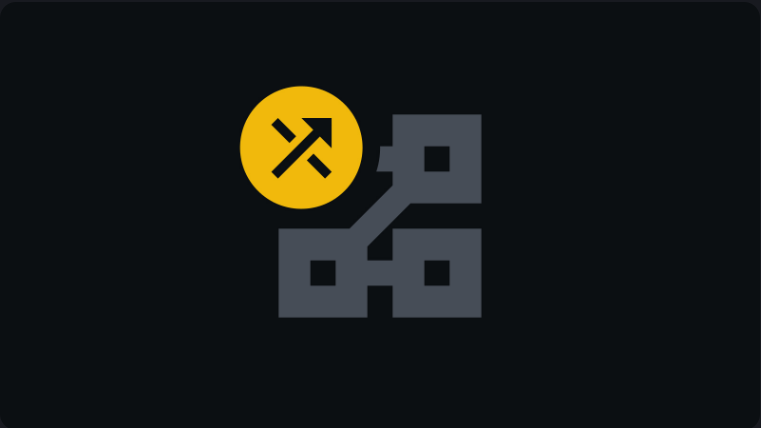
Key Points
Chain abstraction refers to simplifying the use of blockchain apps and services by removing friction and technical processes from the user experience (UX).
Chain abstraction enhances the appeal of apps to end-users and helps developers build efficient DApps that support cross-chain interactions.
Chain abstraction faces challenges such as centralization risks, security risks, and potential interoperability issues.
Introduction
Blockchain interactions are often difficult and confusing, especially for newcomers. This article explores the concept of chain abstraction, how it works, its benefits and challenges, and common misconceptions about it.
Introduction to Chain Abstraction
The concept of chain abstraction, proposed by NEAR, involves decoupling blockchain technology from the user experience (UX) to simplify how users interact with blockchain technology. This way, users don’t need to know which specific blockchain they’re interacting with—or even realize they’re using a blockchain at all.
How Does Chain Abstraction Work?
Efficiency
Imagine a scenario where an iPhone can only send messages to another iPhone but not to an Android device. This would be inefficient and impractical. Similarly, users should be able to interact with decentralized applications (DApps) on different blockchains without unnecessary barriers.
The goal of chain abstraction is to eliminate or hide the complexities of blockchain technology, allowing users to focus on the functionality and benefits of the DApps they use. For example, if Sarah wants to use a new DApp called XYZ, she shouldn’t have to worry about which blockchain it’s built on. From her perspective, she just wants the DApp to work and serve its purpose.
Similarly, millions of people use the internet daily, but only a small fraction understand the technology behind it or how it works. As long as the internet functions as expected and delivers value, the average user has no reason to master its technical details.
Transactions
Imagine using a single DApp to seamlessly conduct transactions across multiple networks and explore different services. For instance, suppose Sarah opens the XYZ App on her phone, orders a coffee, and then sees her favorite clothing store having a sale. She buys a pair of shoes and receives rewards stored as a non-fungible token (NFT) on Ethereum. Later, she notices her rewards are linked to a special offer and purchases an event ticket, which is also an NFT but operates on the BNB Smart Chain (BSC).
Since all these transactions can be done within the same app, Sarah doesn’t need to manage multiple wallets, switch networks, or handle transaction fees directly. This deep cross-chain interaction is the ultimate goal of chain abstraction.
Benefits of Chain Abstraction
Liquidity Integration
Liquidity is often confined to specific blockchains, making it hard for users and developers to access and utilize. Chain abstraction solves this by enabling liquidity access across different blockchains.
Suppose John wants to lend his tokens to earn interest. If liquidity is siloed between blockchains, he’d need to find a lending platform on the specific blockchain where his tokens reside. With chain abstraction, however, John can lend his tokens on a platform that aggregates liquidity from multiple blockchains. This could attract more users to the platform and offer John more competitive interest rates.
Simplified Development Process
With chain abstraction, developers gain the flexibility to build DApps without being constrained by the limitations of a specific blockchain.
Developers can combine Ethereum’s robust smart contract capabilities with Polygon’s cost-efficiency. For example, Decentraland is built on the Polygon network, allowing users to claim, buy, and sell wearables—or even exchange them for avatars—without paying transaction fees. Notably, Decentraland achieves zero fees by combining multiple features. Transactions on Polygon incur minimal fees but aren’t entirely free.
Challenges of Chain Abstraction
Centralization Risks
Achieving chain abstraction requires creating an interface for users to interact with various blockchain apps in a one-stop manner, improving UX. However, concerns exist that this interface could become a single point of failure.
Security Risks
Each blockchain has its own security protocols. Merging them into a single interface makes it difficult to ensure all security measures are upheld. If implemented carelessly, the new chain abstraction interface could introduce risks to individual blockchains.
Interoperability Issues
Ensuring interoperability between different blockchains is another challenge for chain abstraction. Blockchains employ unique consensus algorithms and smart contract languages, making it hard to create an interface that works flawlessly across all networks. For example, a smart contract written for Ethereum isn’t directly compatible with Solana due to differences in programming languages and underlying technologies.
Common Misconceptions About Chain Abstraction
Chain Abstraction Eliminates Differences Between Blockchains
While chain abstraction simplifies cross-chain interactions, the unique features of each blockchain remain unchanged. It improves UX by streamlining and automating technical processes but doesn’t alter the underlying infrastructure of blockchains.
Chain Abstraction Is Only About Cross-Chain Transactions
Facilitating transactions across blockchains is a key function of chain abstraction, but it’s not the only use case. It can also simplify DApp usage, smart contract deployment, and cross-chain data retrieval.
Conclusion
Chain abstraction refers to simplifying interactions between different blockchain networks. Its benefits include liquidity integration and streamlined development processes. However, it also faces challenges like centralization and security risks, as well as potential interoperability issues. Despite this, chain abstraction can pave the way for a user-friendly, interoperable blockchain ecosystem.
















